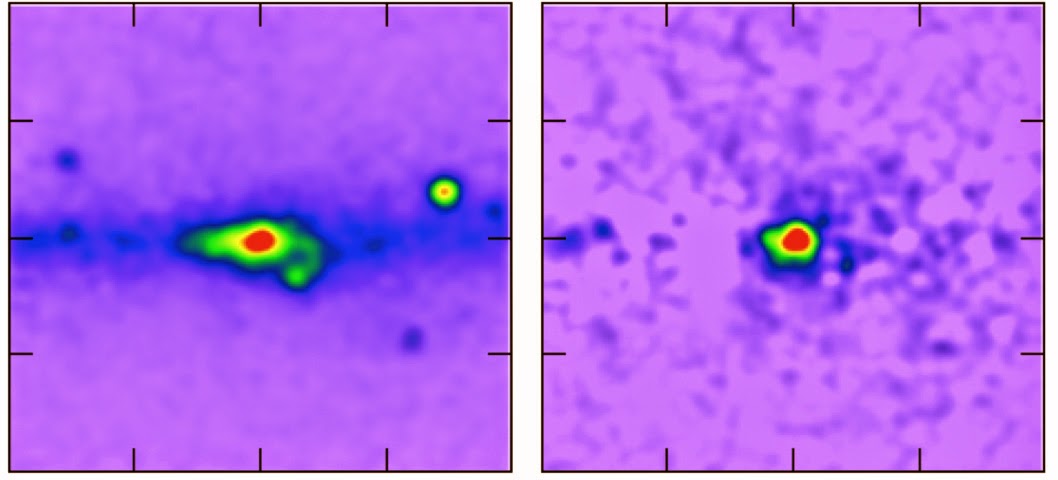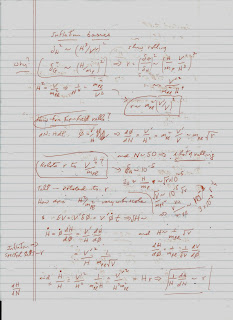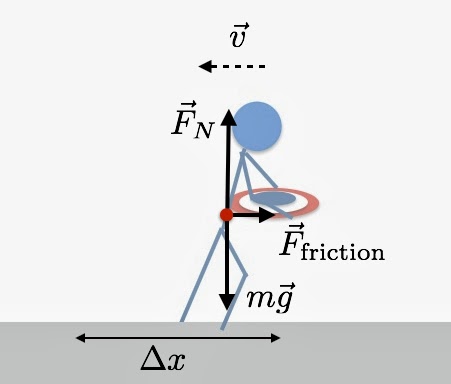All Posts (6509)
http://www.shondabrock.com/#/blog/4559736266/This-is-an-Ode-to-Firsts/7825874
This is an Ode to Firsts.
Firsts are as old as the beginning of time. God created the Heaven and the Earth and afterwards He looked over the surface and created Light. He called the Light Day and the Darkness was called Night, and that was the First day.
Well something a little less majestic are my personal collection of Firsts. They might not be equal to the birth of the earth or the launch of religion, but they will always live in my memory as Firsts.
The First man I ever loved was my father. I loved everything from his natural masculine scent to the way he never missed making Christmas eggnog from scratch.
The First time I every touched a gun. It felt like power, death, control and fear all rolled into one chaotic emotion. I remember never wanting to touch it again, yet a few years later I joined the service and lugged one around for five years. Funny, how life turns out.
Speaking of the Army, I still get goose bumps recalling the First time I was called “Ma’am” in front of my battalion. The weight of that one syllable word rang like liberty through my body because I knew I had earned the respect of my soldiers.
The First time I looked into my newborn daughter’s eyes subdued my heart. There are no words to describe the miracle of birth. All I can say is its one thing to feel movement inside your belly for months, but another to witness life where there was none.
Unfortunately, there are some First’s that I wish to strike down from my memory, like pushing the delete button on a keyboard. But they too will always remain.
Like the First time someone called me the N word. I was so confused. I looked around wondering who they were talking to before I realized it was me. I should have rained terror down on them, but I was so embarrassed that I was so naive.
On a lighter note, I remember very well the First time I ate chitlins at someone else’s house. This particular First also became a Life Lesson. For those of you who don’t know what chitlins are please Google, but for those of you who do know what they are, you also know that you can’t eat just anybody’s chitlins. I didn’t know that rule until then. That mess in my mouth was so foul… that it immediately became the measure for being disgusting and being disgusted at the same time. And it became a Life Lesson never to be forgotten. “Never eat anybody’s chitlins. I must trust them explicitly before that delicacy ever crosses my lips.”
Please feel free to share your Firsts.
Oh and No Chitlins please, I’ll have a glass of water instead.
| Source: Link below to access interactive media |
For the last 50 years, Star Trek has captivated audiences as the crew of the U.S.S. Enterprise explored the galaxy using technological advances – warp drive, wormholes, beaming technology, holodecks – in order to do so. Dirk K. Morr, a professor at the University of Illinois at Chicago, joins us to discuss the scientific ideas behind Star Trek technologies. Morr will present his findings at 6:00 pm on Wednesday at the University of Illinois at Chicago in the Behavioral Science Building.
Scientific Chicago: Real Physics Behind Star Trek
 |
| "1984" |
The security of a data connection protected using a flawed U.S. encryption standard promoted by the National Security Agency could be broken in under 16 seconds using a single computer processor. That’s according to the first in-depth study of how easily encryption systems that use the now deprecated Dual_EC random number generator could be defeated by an attacker that had “backdoored” the standard.
The flawed standard has never been widely used to protect Internet communications, even though the security company RSA got $10 million from the NSA to make it the default random number generator in one of its software packages. It is not known whether the NSA or anyone else knows the crucial mathematical relationship needed to exploit the flaw and undo encryption based on Dual_EC.
However, the study conclusively shows that an attacker that did know the key to the Dual_EC backdoor could put it to practical use. Not all of the six different encryption software packages tested could be defeated in seconds: half took a 16-processor cluster between 60 and 80 minutes of work to break. But a national intelligence agency could significantly improve on those times by devoting more computing power to the problem.
MIT Technology Review:
Study Shows Flawed U.S. Encryption Standard Could Be Broken in Seconds
I'm pickin up a conflict between the nature power people and the technology powered people to rule the planet. They duke it out by trying to reduce each other primitive savages.
The nature people (NTRs) can say a glandular hello, the Technos countered by placing a shield micro dot on their foreheads. A group of NTRs were talking when one turned without warning and winged a boomerang at a hovering ear drone, splitting it into pieces. They then went into the glandular and nodded heads toward each other.
The Techno people can't glandular connect but they do have devices for everything and a software called swarm that helps them work in masse. Techno people don't like to be solitary unless going into sensory overload, which has replaced any and all drug use. So when you see a lone person you have to figure is he naturating or chaosing.
Once a Techno challenged a NTR to a contest to see who could relay the farthest. The Techno first bounces signals off the ionosphere. He then sent signals to the furthest satellite in space. The NTR then transcribed a lengthy message from a friend on the other side of the galaxy w/pictures and a joked about a strange signal he intercepted from a busted up satellite.
The NTRs like to live simple, they are natural of course, grow food themselves, mostly for the pleasure of it. Their needs are small, they live with seasonal local foods. The Technos still use the mega farm approach to sustain their selves and are working toward synth-food with infinity shelf life.
The Technos brag how their big machines will one day build new pyramids once they can break the dense matter gravity link. The NTRs say what is matter or gravity to us? (Ooh Neal, there is no spoon!).
Sound familiar? I wonder who we be ultimate. I do think we trust too much in technology today and don't know enough about nature (MTR NTR). The key is not information and calculation but the illumination of knowledge.
 |
| Maps of gamma rays from the center of the Milky Way galaxy, before (left) and after signals from known sources were removed, reveal an excess that is consistent with the distribution of dark matter. |
Not long after the Fermi Gamma-ray Space Telescope took to the sky in 2008, astrophysicists noticed that it was picking up a steady rain of gamma rays pouring outward from the center of the Milky Way galaxy. This high-energy radiation was consistent with the detritus of annihilating dark matter, the unidentified particles that constitute 84 percent of the matter in the universe and that fizzle upon contact with each other, spewing other particles as they go. If the gamma rays did in fact come from dark matter, they would reveal its identity, resolving one of the biggest mysteries in physics. But some argued that the gamma rays could have originated from another source.
Now a new analysis of the signal claims to rule out all other plausible explanations and makes the case that the gamma rays trace back to a type of particle that has long been considered the leading dark matter candidate — a weakly interacting massive particle, or WIMP. Meanwhile, a more tentative X-ray signal reported in two other new studies suggests the existence of yet another kind of dark matter particle called a sterile neutrino.
In the new gamma-ray analysis, which appeared Feb. 27 on the scientific preprint site arXiv.org, Dan Hooper and his collaborators used more than five years’ worth of the cleanest Fermi data to generate a high-resolution map of the gamma-ray excess extending from the center of the galaxy outward at least 10 angular degrees, or 5,000 light-years, in all directions.
“The results are extremely interesting,” said Kevork Abazajian, an associate professor of physics and astronomy at the University of California, Irvine. “The most remarkable part of the analysis is that the signal follows the shape of the dark matter profile out to 10 degrees,” he said, explaining that it would be “very difficult to impossible” for other sources to mimic this predicted dark matter distribution over such a broad range.
The findings do not constitute a discovery of dark matter, the scientists said, but they prepare the way for an upcoming test described by many researchers as a “smoking gun”: If the gamma-ray excess comes from annihilating WIMPs, and not conventional astrophysical objects, then the signal will also be seen emanating from dwarf galaxies that orbit the Milky Way — diffuse objects that are rich in dark matter but not in other high-energy photon sources such as pulsars, rotating neutron stars that have been floated as alternative explanations for the excess.
Quanta Magazine: Case for Dark Matter Signal Strengthens
So, our layout editor wanted me to do something different with Neela, a secondary character for "Wild Space Saga." But I thought she looked just fine as-is. So I'll be posting all 3 of the best iterations for you all. But I need your help. Which color scheme do you think is the best? Let me know down below!
First up is the original as I had it.
Next is the more earthy combo that my editor came up with.
And here's the third: So let me know which one you think is best! Thanks for your input, folks! And be sure to keep up with our webcomic at http://www.tapastic.com/series/wildspacesaga .
-Brandon Hill
 |
| Ozgenur “Ozge” Kahvecioglu Feridun first came to Argonne in 2010, when she was as a Visiting Scientist working on a scale-up project, the Ultrafast and Large Scale Boriding project. |
A visiting scientist at Argonne in 2010 and a postdoctoral research fellow since 2012, Ozgenur “Ozge” Kahvecioglu Feridun is a metallurgical and materials engineer with the Process Technology Research group in the Energy Systems division.
What do you do at Argonne?
I work on process development and scale-up of advanced cathode materials. We scale processes from bench to pilot scale, identifying and resolving process challenges when producing materials. This reduces the risks associated with the commercialization of new materials.
What made you choose Argonne as the place to continue your postdoc work?
Actually, this is my second time working at Argonne. In 2010, I was here as a Visiting Scientist working on another scale-up project, the Ultrafast and Large Scale Boriding project, under Ali Erdemir. During this project, I learned firsthand how to apply my skills to solve process scale-up problems and how working on a diverse team contributed to the overall success of the project. Everyone brought a different expertise to the table that helped us solve many difficult issues.
On that project, we scaled an advanced heat-treating process from bench to industrial scale. It was subsequently licensed to an industrial partner and won an R&D 100 award in 2012.
Argonne National Labs: Ozgenur Kahvecioglu Feridun, by John Spizzurri
 |
| Source: Link below |
After following the BICEP2 announcement via Twitter, I had to board a transcontinental flight, so I had 5 uninterrupted hours to think about what it all meant. Without Internet access or references, and having not thought seriously about inflation for decades, I wanted to reconstruct a few scraps of knowledge needed to interpret the implications of r ~ 0.2.
I did what any physicist would have done … I derived the basic equations without worrying about niceties such as factors of 3 or 2π. None of what I derived was at all original — the theory has been known for 30 years — but I’ve decided to turn my in-flight notes into a blog post. Experts may cringe at the crude approximations and overlooked conceptual nuances, not to mention the missing references. But some mathematically literate readers who are curious about the implications of the BICEP2 findings may find these notes helpful. I should emphasize that I am not an expert on this stuff (anymore), and if there are serious errors I hope better informed readers will point them out.
By tradition, careless estimates like these are called “back-of-the-envelope” calculations. There have been times when I have made notes on the back of an envelope, or a napkin or place mat. But in this case I had the presence of mind to bring a notepad with me.
Quantum Frontiers: Inflation on the back of an envelop
We weren't able to get a new page up this week due to unforseen circumstances, but we've got an awesome character profile up for your viewing pleasure! Just come on over here to check it out:
Be sure to give us some love, and let us know what you think!
-Brandon Hill
Amazon.com: The Sixth Extinction - An Unnatural History, Elisabeth Kolbert
Live Science: Civilization Doomed by Over-consumption, Wealth Inequality
Live Science: Society is Doomed, Scientists Claim
Hey BSFS!!!!
I just got Amullette Aflame back from the editor and wanted to give you all a chance to get it Free before the virtual launch May 1st.
FREE Sunday March 30th - Tuesday April 1
After three years in prison without trial, Amullette is given the opportunity for parole if she agrees to raise a stolen child named Mikaya as her own. Another condition of parole is marriage to a high ranking soldier of the Universal. As fate would have it, her selected spouse is her ex-fiancé, Admiral Semaj Kroan.
Adjusting to her new life is easier than she expected as she falls in love with Admiral Kroan and adores the little girl the Universal has asked her to raise. However, as Amullette and Kroan begin to build a beautiful life together they must face making the ultimate sacrifice to get Mikaya back where she truly belongs.
Hey there, BSFS!
You know, it has come to my attention that I NEVER posted any updates to my comic here!
::le gasp!::
My friend and co-writer, Terence Pegasus and I have created a new Wild-West-in-space themed webcomic called WILD SPACE SAGA, a three-arc epic series in the far-flung future.
The plot goes a little something like this:
***
The Future.
Far From Earth.
Mankind has spread to the stars; Earth has been lost. Civilization has fallen and arisen.
Since the devastation of the Imperium Wars, the danger of internal conflict among the Alliance of free worlds has become a constant threat, while the Second Imperium, a cruel mockery of the fallen old civilization, licks its chops for more worlds to increase its growing war machine.
Faced with the superior technology of the Imperium, the Alliance knows that the only defense against the Imperial war machine is unity.
But that hope is bleak.
And an ancient evil is coming.
***
Sound epic? It is! You like Gunslinging? We got it! Sexy catgirls (and boys)? Got that too! Epic space battles and giant freaking robots? We've got you hooked up! High stakes plot with the future of life as we know it on the line? Oh, yeah!
So the only question left is, is your body ready for awesome?
Of course it is!
I should have been sharing this with you all for awhile now, but it completely slipped my mind for some reason (Don't judge me. :-P ). But that means you're all in luck, as we have a good backlog of pages since this past August, when it began. Our first story arc, "The Last Warship" is well underway, So come on down and check us out! New Updates each week! And we have big things in store!
Also, to double your pleasure, we have new concept art and updates posted on our official DeviantArt page. I'll be sure to post some of our new works here as well, so follow my posts here on BSFS. But if you want to keep up with us a bit more closely, and especially if you have a DA account, devwatch us here:
Wild Space Saga - Deviantart
If we've piqued your interest, thank you very much! We hope you love the work we've done. And all we ask is that you share the love if you love it! We want our viewership to grow like the itchy spot on your foot that you told no one about. So come on down for adventure, and stay for the free baklava. And as we like to say, we hope you'll come along with us to follow the Northwest Passage!
See you soon, space cowboys!
-Brandon Hill
P.S. Here's another freebie for you to share the love with! Also, let me know what you think of the comic! Feedback is ALWAYS welcome!
...and, it's Friday! One more week to geek on "Winter Soldier." I'd buy on Fandango: after the east coast nuclear winter, people will be stir crazy from telecommuting and need to get out...and see real people again.
The analysis below is the reason why you shouldn't take a physics person to the movies with you...just kidding, and my wife sadly has no choice in the matter. We'll behave, promise. Just don't ask questions like these.
At the end, Cap throws his shield at the Winter Soldier – because that’s what Captain America does. But wait! The Winter Soldier just catches the shield and throws it right back at Captain America. The real cool part is what happens when Cap catches the shield. The impact is strong enough to push him back a little bit. Is this enough to get an estimate for the mass of the shield? I think so.
Sliding Back
This is really a multi-part problem. First, the shield is thrown by the Winter Soldier. I don’t really care about the throwing motion. Next, the shield moves through the air to Captain America and collides with him. This gives him some recoil velocity. However, Cap is standing on the ground such that his recoiling body is slowed down to a stop by friction.
It might not seem to be the best place to start, but I am going to start backwards. Let’s look at Captain America sliding after the impact with the shield. By estimating the frictional force and the sliding distance, I can get a value for the recoil speed after the impact.
In this first problem, I can just consider Captain America as a block with some initial speed moving across the ground. Here is a force diagram while he is slowing down (after the impact).
The forces in the vertical direction must add up to zero since Cap doesn’t accelerate up or down. This means that I can find the force the ground pushes up on him:
Why do I need this force pushing up (usually called the Normal force)? If I use the typical model for sliding friction, the magnitude of the frictional force can be determined by:
Wired: How Much Does Captain America’s Shield Weigh? Rhett Allain
Counterfeiting is a steady and increasingly important problem that occurs in nearly every trade and industry. Recognizing the difficulty in distinguishing counterfeit goods from genuine products, new nanoscale technologies are being developed to prevent and identify this illegal practice. Using dye-coated one-dimensional (1D) nanowires, researchers at the Korea Advanced Institute of Science and Technology (KAIST) in South Korea have demonstrated that randomly distributed nanowires can generate unique and simple barcode patterns readily applicable by many to anti-counterfeiting.
Reporting in Nanotechnology, nanoscale fingerprint patterns are generated by simply casting fluorescent dye-coated silver nanowires onto a transferrable flexible polyethylene terephthalate (PET) film. The direction and target markers ("KAIST" and "X") are patterned by a photolithographic technique to provide positional information for identification and the nanowires are cast onto it. Then, using an optical microscope, the resulting unique fingerprint patterns can be visually authenticated in a simple and straightforward manner, as shown fully in the figure above.
Nano Tech Web: Combatting counterfeit goods with nanoscale fingerprints
 |
| Photon-shaping technique could lead to "nuclear" quantum computers. (Courtesy: iStockphoto/polygraphus) |
A way of modulating the waveforms of individual, coherent high-energy photons at room temperature has been demonstrated by researchers in the US and Russia. The advance opens the way for new quantum-optics technologies capable of extremely high-precision measurements, as well as the possibility of <>quantum-information systems based on nuclear processes. The new approach could also be useful for those doing fundamental research in a variety of areas, ranging from the role of quantum phenomena in biological processes to fundamental questions in quantum optics itself.
The technique was developed by Olga Kocharovskaya, Farit Vagizov and colleagues at Texas A&M University and the Kazan Federal University. Their set-up bears some similarity to a Mössbauer spectroscopy experiment. A sample of radioactive cobalt-57 decays to an excited state of iron-57, which then decays by emitting a 14.4 keV "soft" gamma-ray photon. This photon can then be absorbed and re-emitted by a nearby stainless-steel foil containing iron-57. Because of the Mössbauer effect, no energy is lost in the recoil of the stainless-steel lattice and the photon is emitted at 14.4 keV with very little spectral blurring.
As the foil absorbs and re-emits the photons, it is vibrated at megahertz frequencies. By making clever use of the Doppler effect, the team is able to shape a single photon into a double pulse and even a train of ultrashort pulses. This makes it possible to use the gamma-ray photons to encode quantum information in a "time-bin qubit" – quantum bits in which information is encoded in terms of the relative arrival time of pulses.
Physics World:
Gamma-ray shaping could lead to 'nuclear' quantum computers





